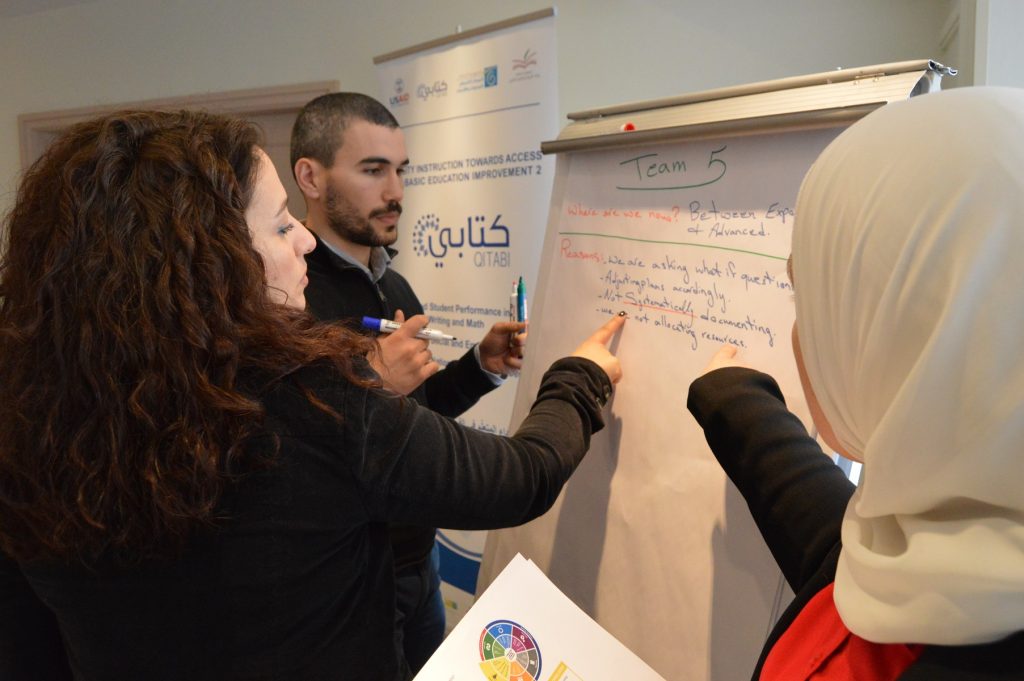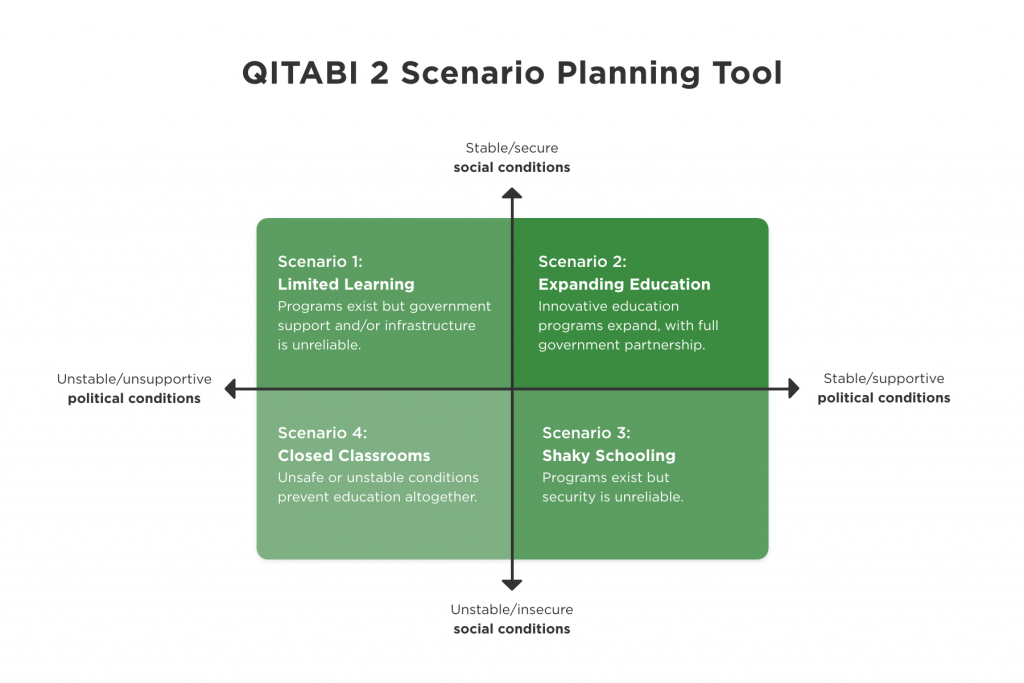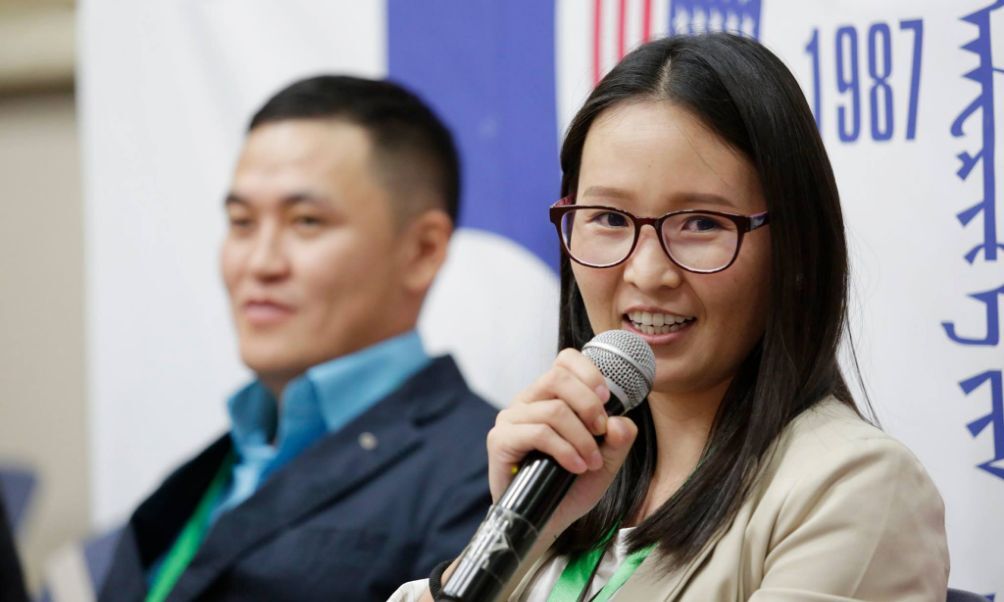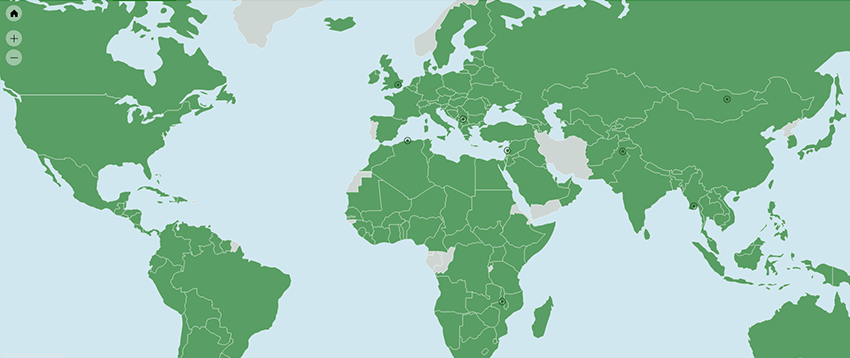-
What We Do
- WHERE WE WORK
-
About Us
 Welcome Message from Carol Jenkins
Welcome Message from Carol JenkinsFor more than 90 years, World Learning has equipped individuals and institutions to address the world’s most pressing problems. We believe that, working together with our partners, we can change this world for the better.
On my travels, I’ve had the opportunity to meet with many of those who have joined us in this mission. In Baghdad, we’ve trained more than 2,300 Iraqi youth who are already giving back at home. In London, our partners in the TAAP Initiative strongly believe that we are all responsible to practice inclusion. And in Vermont, our Experiment in International Living and School for International Training participants prove every day that they have the tools and the determination to change the world.
Please join us in our pursuit of a more peaceful and just world.
- Get Involved
Media Center > Story
Scenario Planning for Unstable Environments
June 30, 2021

This story was originally published on USAID’s Learning Lab blog. It has been republished here with permission.
By Wafa Kotob, Chief of Party for World Learning in Lebanon, and Rajani Shrestha, Project Director, QITABI
In fall 2019, social, political, and economic instability in Lebanon began creating serious challenges for our team working on the USAID-funded Quality Instruction Towards Access and Basic Education Improvement (QITABI) 2 program. We needed to devise an adaptive management strategy that would allow us to quickly respond to rapidly changing circumstances and still achieve our program goals of improving primary education for more than 300,000 children across the country.
To deal with these challenges, we created a scenario planning tool, which would enable us to better understand the situation on the ground, make calculated forecasts, and prepare for unpredictable future events. Utilizing the Collaborating, Learning, and Adapting (CLA) approach, we developed the tool with USAID and program partners during a two-day workshop in January 2020. We used a four-step facilitated participatory process, which included participatory reflection, identifying context indicators, a scenario planning exercise, and creating a pathway to implementation.
Participatory Reflection
We began by conducting a self-assessment exercise using the CLA maturity tool for scenario planning, pause and reflect, and adaptive management. As a team, we gained deeper understanding of CLA in the Program Cycle and collectively reflected on how we were already using the approach. The exercise helped us reflect on how we could intentionally integrate it into our work.
Identifying Context Indicators
Then, we identified important context indicators to help us recognize trends and other factors that could offer early warnings of potential changes. The critical external influences included political, economic, security, and environmental/health conditions, as well as government ministries’ adoption capacity. We then reviewed the status of each influential factor over the past six months to assess changes and trace a pattern.
Scenario Planning Exercise
Next, we conducted a scenario planning exercise, using the identified external factors. We determined that the two most influential factors were political and social conditions. From there, we created a 2×2 matrix describing four major potential scenarios based on the security or insecurity of those conditions:
1) limited learning (stable social conditions, but unstable political conditions)
2) expanding education (stable political and social conditions)
3) shaky schooling (stable political conditions, but unstable social conditions)
4) closed classrooms (unstable political and social conditions)

The matrix provides a simple and powerful visual to capture various situations we might encounter.
Creating a Pathway to Implementation
The final step was identifying all pathways to implementation that would allow us to achieve the program’s objectives within the new environment. This included discussing opportunities and threats for each scenario as well as which activities could still be attempted, and which should be paused or avoided. Using this tool, we have been able to preemptively explore alternative courses of action so we can be proactive and fully prepared to change course if the situation deteriorates.
Although we didn’t realize it, our new scenario prediction tool would soon be put to the test by the COVID-19 pandemic. Using our adaptive management plan, we were able to successfully pivot within a matter of weeks. We quickly submitted a contingency plan to USAID with a new scenario and activities adapted to the new context.
Because of this work, throughout the pandemic, we have been able to provide vital support to students, teachers, and schools, so that children can continue learning even if schools are closed.





